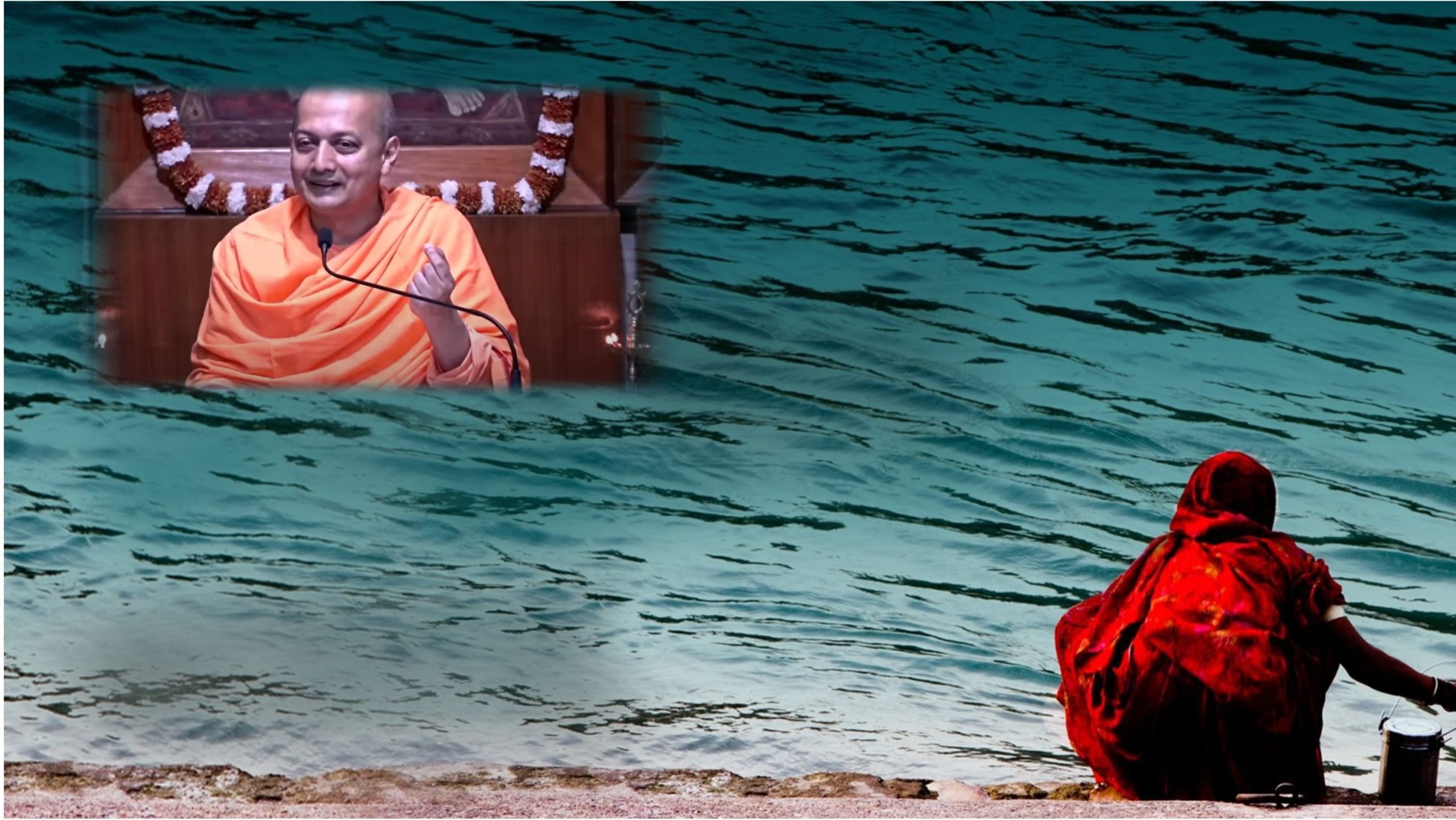- Visitor:32
- Published on: 2025-04-24 11:03 am
An Ayurvedic Guide to this Heated Summer
Newspapers are reporting the mercury rising above 43 degrees centigrade last week. Increased temperature has a very strong impact on our body including fever, skin rashes, dizziness, kidney issues, heart stress, gastric issues, muscle cramps, vomiting, diarrhea, dehydration, fainting, severe abdominal pain and so on. The question arises what we should do? Sit and worry about the climate? The answer lies in traditional wisdom of ‘Ritucharya’-- the seasonal regime, referring to the dietary habits that a healthy individual should follow according to seasonal changes to maintain optimal health. Our sages and writers of these ancient texts have a logical mind, which has guided us with proper reasoning. Though these suggestions were made centuries ago, they are practical even today.

Bharata is the land of vivid culture and languages. This diversity makes this land most unique on this planet. Even Nature expresses itself vividly from the land of sage Kaashyapa in the north to the Devi in the form of Kumarikanya in the South, from the divinity of Dwarka and Somnath in the West to the dance of seven sisters in the east, nature amazes us. In this land nature also makes us experience the climate with extreme variations. The great sages of ancient times have understood these seasonal variations and its impact on our health. They explained in detail about seasons and the regime to be followed in each season. We find this beautiful health concept in the treaties of Ayurveda. Most of the Bharat experiences six seasons. These seasons are classified into six, based on the influence of the sun, moon, and wind on the earth (Ashtanga Hridayam 3.2):
1. Shishira (Magha, Phalgun): Late Winter (mid-January to mid-March in India)
2. Vasanta (Chaitra, Vaisakha): Spring (mid-March to mid-May in India)
3. Grishma (Jyeshtha, Ashadha): Summer (mid-May to mid-July in India)
4. Varsha (Shravana, Bhadrapada): Rainy Season (mid-July to mid-September in India)
5. Sharad (Ashwin, Kartika): Autumn (mid-September to mid-November in India)
6. Hemanta (Margashirsha, Pausha): Early Winter (mid-November to mid-January in India)
We are in the phase of the year where we are gradually migrating from winter to summer via spring. But the effect of summer or Grishma Ritu is seen earlier this year. Newspapers are reporting the mercury rising above 43 degrees centigrade last week. Increased temperature has a very strong impact on our body including fever, skin rashes, dizziness, kidney issues, heart stress, gastric issues, muscle cramps, vomiting, diarrhea, dehydration, fainting, severe abdominal pain and so on. The question arises what we should do? Sit and worry about the climate? The answer lies in traditional wisdom of ‘Ritucharya’-- the seasonal regime, referring to the dietary habits that a healthy individual should follow according to seasonal changes to maintain optimal health.
We live in Bharata, we are in the northern hemisphere of the earth, where sun is closer from mid January to almost mid July, which we call the Uttarayana (the Northern solstice). During this time, the sun being closer dries the moisture off the land and air due to heat. That's why the strength of an individual is minimum. If we talk in terms of properties, dry and hot properties are in dominance. Ayurveda books mention in detail about regimes to be followed in each season by healthy individuals to remain healthy. These are general suggestions, which can be altered as per the guidance of an ayurveda vaidya. We shall now discuss the regime to be followed in the Grishma Ritu (summer). Aacharya Vagbhata mentions in this book Ashtanga Hridayam:
तीक्ष्णांशुरतितीक्ष्णांशुर्ग्रीष्मेसंक्षिपतीवयत्||
प्रत्यहंक्षीयतेश्लेष्मातेनवायुश्चवर्धते|
अतोऽस्मिन्पटुकट्वम्लव्यायामार्ककरांस्त्यजेत्||
[As the sun is very hot and the rays are sharp, kapha decreases and vata increases during summer season. Hence, one should not take the food substances having the tastes of lavana (salty), katu (pungent) and amla (sour) and avoid exercises and exposing to sun in this season. These three tastes are dominant with agni-mahabhuta and their consumption in the Grishma Ritu could be difficult for the body. Now, the question arises what an individual should consume them.]
Vagbhata goes on to say:
भजेन्मधुरमेवान्नंलघुस्निग्धंहिमंद्रवम्|
कुन्देन्दुधवलंशालिमश्नीयाज्जाङ्गलैःपलैः||
[Foods having madhura rasa (sweet taste), laghu (light), snigdha (unctuous), sita (cold) and drava (liquid) gunas (properties) should be taken in summer. Sadi rice, which is as white as flower kunda (Jasminummultiflorum) and indu (moon), should be taken along with jahgalamamsarasa or meat soup of animals living in dry land, or vata dominated land. The meat of such animals is considered to be light to digest during summer season. Take only thin mutton soup.]
He also discusses the options for the people with non-vegetarian preferences. Briefly, there is description about consumption of alcohol as well:
मद्यंनपेयं, पेयंवास्वल्पं, सुबहुवारिवा|
अन्यथाशोषशैथिल्यदाहमोहान्करोतितत्||
पिबेद्रसंनातिघनंरसालांरागखाण्डवौ||
पानकंपञ्चसारंवानवमृद्भाजनेस्थितम्|
मोचचोचदलैर्युक्तंसाम्लंमृन्मयशुक्तिभिः||
पाटलावासितंचाम्भःसकर्पूरंसुशीतलम्|
ससितंमाहिषंक्षीरंचन्द्रनक्षत्रशीतलम्||
अभ्रङ्कषमहाशालतालरुद्धोष्णरश्मिषु||
वनेषुमाधवीश्लिष्टद्राक्षास्तबकशालिषु|
.सुगन्धिहिमपानीयसिच्यमानपटालिके||
कायमानेचितेचूतप्रवालफललुम्बिभिः|
कदलीदलकह्लारमृणालकमलोत्पलैः||
कोमलैःकल्पितेतल्पेहसत्कुसुमपल्लवे|
मध्यंदिनेऽर्कतापार्तःस्वप्याद्धारागृहेऽथवा||
निशाकरकराकीर्णेसौधपृष्ठेनिशासुच||
स्वस्थचित्तस्यचन्दनार्द्रस्यमालिनः|
निवृत्तकामतन्त्रस्यसुसूक्ष्मतनुवाससः||
जलार्द्रास्तालवृन्तानिविस्तृताःपद्मिनीपुटाः|
उत्क्षेपाश्चमृदूत्क्षेपाजलवर्षिहिमानिलाः||
कर्पूरमल्लिकामालाहाराःसहरिचन्दनाः|
मनोहरकलालापाःशिशवःसारिकाःशुकाः||
[During summer alcoholic drinks are generally prohibited. Those who are habituated, smaller quantity are prescribed that too diluted with plenty of water. Otherwise complications like emaciation, looseness of joints, burning sensation, delusion etc. may be arising. Drink rasala (curds churned without any water and mixed with sugar, pepper, dry ginger and cumin), raga (a decoction of grapes with sali rice), saktu, honey, sugar, powder of arrow root, cardamom, cinnamon and coriander, khandava (prepared with sour and sweet fruits) during summer season. Prepare pahcasara (a type of mantha prepared with draksa (raisins), madhuka, kharjura (dates), kasmarya and parusaka in fresh earthenware. It will get flavor of moca (banana) and choca (jackfruit) due to the association of the above leaves while cooling mantha. Afterwards it should be mixed with some sour substances and serve in a mud pot. Cooled water flavored with patala flower and mixed with karpura (camphor) is also good for drinking during summer. Mahisaksira (buffalo’s milk) mixed with sugar and cooled by the rays of moon and stars are to be given as a drink.]
Ideal location to spend day time in summer is in the parks where the tall trees like pines (sala) and palms (tala) embrace the sky that will prevent the hot rays of the sun. Or spend in the houses around which bunches of flowers like jasmine and grapes are hanging from their creepers, curtains made of clothes wetted by scented, cool water, mango trees bearing fruits and tender leaves all around. In such a place set up a soft bed for sleeping in noon hours with the petals of flowers of kadali, kalhara and mrnala etc. Sleep in a house cooled by water fountains. It is suggested to spend nights on terraces enjoying the cool rays of the moon.
Fatigue due to the season will be relieved by— composure of the mind, besmearing the body with sandalwood pastes, wearing garlands, avoiding sexual activities, wearing light dresses, fanning with fans made of leaves of tala or padmini (lotus) made wet and also with peacock feathers, wearing garlands of karpura and mallika, and also pearl chains dipped in haricandana (white paste of sandal). Spending time with children talking with pretty joyful accents, colorful and pretty birds like parrots singing around would be advisable. Aacharya Sushruta says, the injudicious use of out-of-season fruits, herbs, vegetables, and other resources, as well as unethical actions by people, can lead to widespread diseases or even the death of large populations. Intelligent individuals should avoid such food habits and regimens. The references from Ashtanga Hridayam gives us an idea what we must be doing in the summer season. Few of the suggestions seem to be obsolete and not very practical in today’s times. However, some suggestions we have to take the essence and not to implement literally. For example, Vagbhata advises to rest in the afternoons under huge trees, or sleep in the houses which have big fans, curtains, beds with leaves etc. The take home point is the place where you rest/sleep should be comfortable and cool. In today’s context we can understand it with the use of air coolers or air conditioners. In short, since the climate is hot and dry, all what we do as activity, or eat should be cooling and nourishing in effect. Our sages and writers of these ancient texts have a logical mind, which has guided us with proper reasoning. Though these suggestions were made centuries ago, they are practical even today. Such teachers/ writers are called Aptas (The Authority). The Charka Samhita says that those, who are free from rajas and tamas, are endowed with strength of penance and knowledge, and whose knowledge is without defect, always unchallenged and true universally in past, present and future, are known as apta (who have acquired all the knowledge), sista (expert in the discipline) and vibuddha (enlightened); their word is free from doubt and is true because being devoid of rajas and tamas how they can speak a lie. Let use discuss few points which are practical in today's context in summer:
• All the changes of seasonal regime should be gradually done over two weeks of time, consisting of the last one week of the previous season and one week of next season - this time period is called Ritusandhi.
• Use a humidifier if you are using an air conditioner.
• Avoid all spicy, fried, salty, excessively sour, fermented food.
• Minimize physical work/exertion.
• Avoid exposure to sun, especially between 12 noon to 5 pm.
• Resting/sleeping is advisable in day time only during summer.
• Wear loose and light colored clothes, prefer cotton.
• If a person has to go in the sun, he/she should ensure that every part of the body is covered and not exposed to hot sun or wind.
• Keep yourself hydrated with sufficient water and sherbets.
• Avoid alcohol, tea and coffee, even carbonated drinks in large quantities.
• Avoid out of season fruits and vegetables.
• Sariba root, this is one of the best herbs to be consumed as a drink in summers.
• Fennel is another herb which is a blessing in the summer, and can be consumed in any form.
• Curd as such is not allowed to be taken in summer due to its hot potency, but can be consumed as lassi after adding sugar. ( traditional raw sugar or misery is preferable)
• Rose water can be added to drinking water.
• Prefer a mud pot over refrigerated or iced water.
• Usheera (or khus) is very cool. It is used in the form of medicine like ushirasava, as a curtain and also as Itra (perfume).
To summarize, during summer the food and surroundings should be comfortable, with good fragrance. Anything which ushna (hot), teekshna (sharp), and agni-guna-pradhana (dominant with agni properties) should be avoided.
- 16 min read
- 0
- 0









.jpg)
